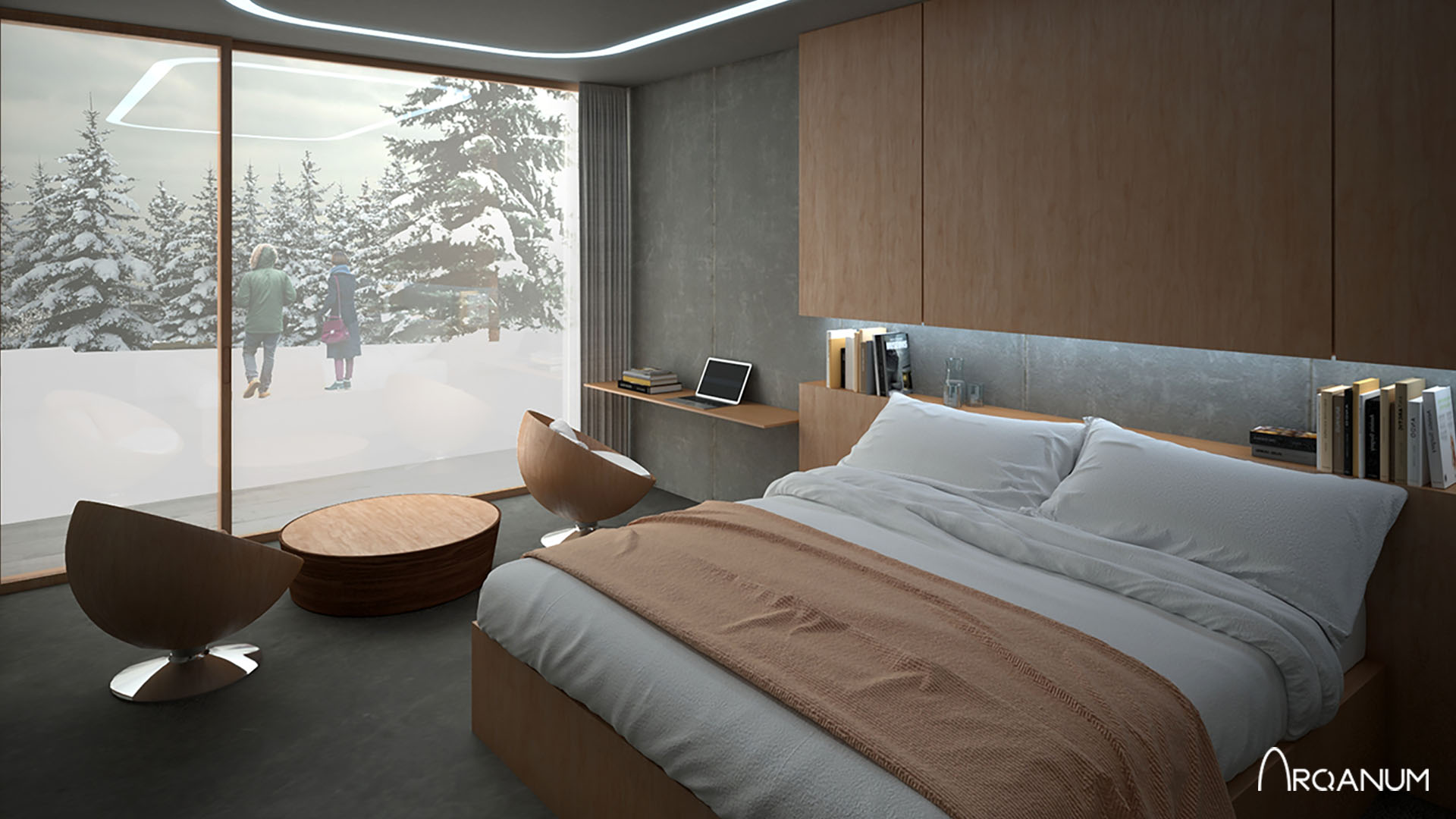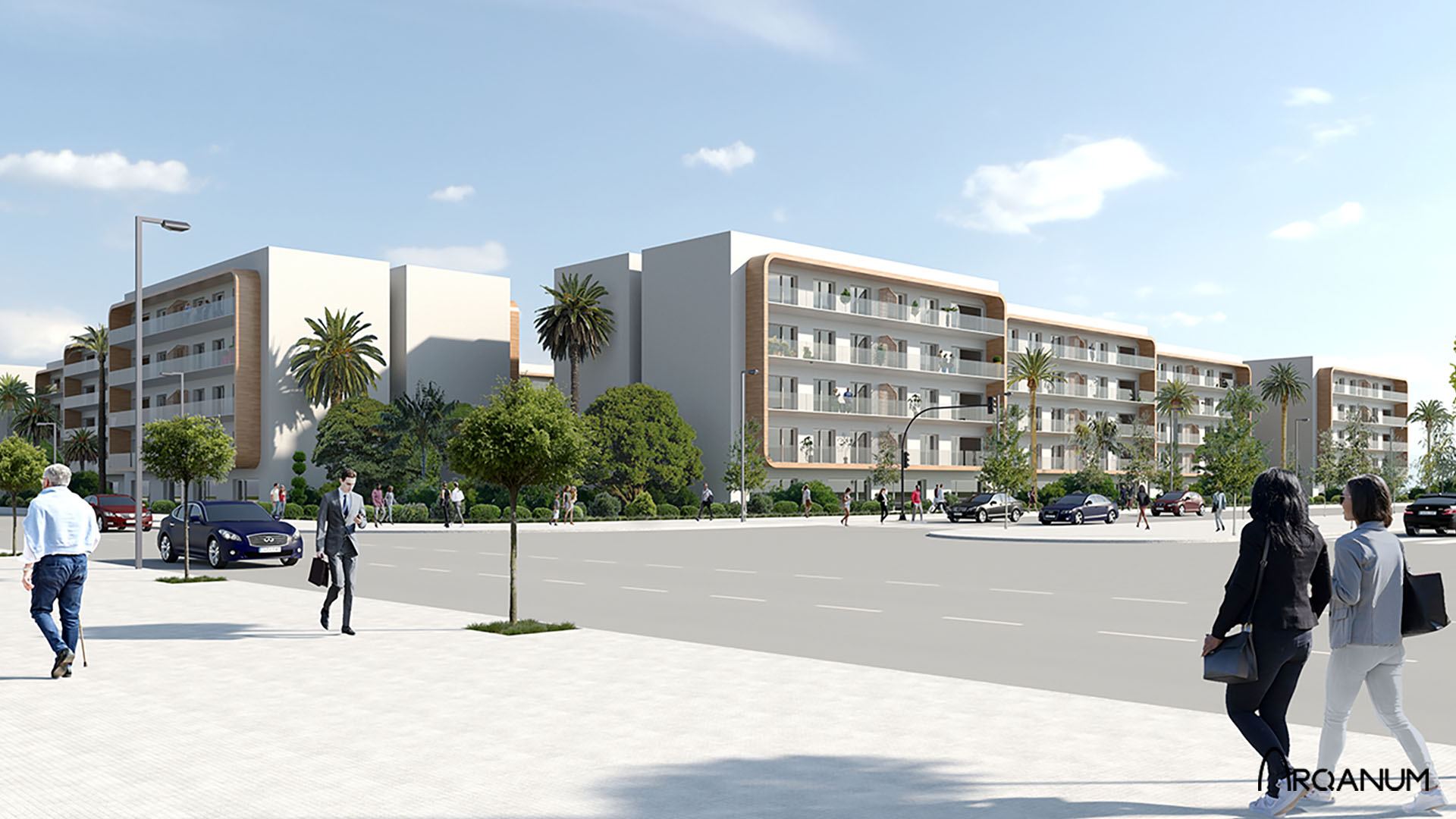Postproduction of 3D images
Postproduction is the process of editing an image, audio or video to achieve a certain effect using specialized software, it is one of the most essential graphic design tools. The image plays a very important factor in today's society as a means of information. It is essential in advertising, film and television, art, photo graphic design, architecture, industry, and many other activities. The evolution in image or video processing software has created a scenario in which it is possible to modify many of the characteristics of one of these documents and improve their expressiveness. Among the documents that can be post-produced are images, audios and videos.
The architectural render post-production process begins with an idea that tries to reflect the building's values, making the image or video more attractive to the viewer. In this way, through the post-production of renders, a series of effects and details are added that modify the objectivity or realism of the renders. The first step in developing this idea is to define what qualities can be added to the 3D visualization of architecture, conveniently documenting it through other artists or completed projects. An example of this could be the treatment of the light of an infographic creating a more misty environment, with a more contrasted lighting, with more accentuated shadows and with more defined highlights. Later, the corrections that can be made on the image and that other elements can be added are defined.
One of the most used procedures in the postproduction of an exterior render is the addition of more detail to the images. You can add people who reflect the environment or activity that is proposed for the building, For example, if it is a school among the people that are added should be young people with backpacks and books, children running around, students with computers, parents accompanying your children to school ... One of the elements to add are urban furniture and vegetation, they create greater realism and detail in the image and can reinforce the idea proposed in the render. One of the most important elements to add is the sky, since it is one of the most responsible for creating the atmosphere of a scene. The added sky should be in line with the lighting of the render, although it can accentuate or diminish it.
The lighting of the scene is very important when transmitting the desired idea, good lighting in addition to describing the real lighting of the building once built can help to define the volumes more clearly, to make the reflections and shine of the polished materials. In addition, light is one of the factors that can add more drama to your infographic. On the other hand, the shadows can be more accentuated, giving rise to an environment with sharper light or with less dark shadows, a more softly lit environment is achieved. The treatment of light in an image is one of the elements that contributes the most to the expressiveness of a visualization. Among the possible effects in relation to the treatment of light, we could mention the smoothing or contrast between lights and shadows, the addition of dramatic effects such as beams of light, glare, sparkles ..., the treatment of luminosity, accentuating lights and shadows, Modifying image curves and levels can make an image lighter or darker.
Image color manipulation is the second pillar of image post-production. Chromatism treatment can make an infographic more attractive. By enhancing a certain color, a certain area of the image can be highlighted. Zooming the image towards warm or cool tones can alter the feel of the image. You can also modify the saturation of the colors making the image more attractive or calmer.
.jpg)
Other factors that can be modified are the contrast of the image, the saturation, the balance between lights and shadows or the tendency of the image towards some colors or others. Finally, filters can also be added to the image to enhance certain colors or emphasize areas of the infographic such as vignetting.
Video post-production consists of a set of procedures, which, as with the image, can modify certain characteristics of the same, such as the treatment of lights and shadows, the modification of colors, transitions between scenes, soundtrack addiction, speed up or slow down the video ...
Audio post-production concerns sound effects modified or introduced into audio or video files. These include adding music or dialogue, controlling the volume, transitions between audio tracks, mixing different sounds, changing the timbre or tonality of a sound, adding reverberations and other effects.
3D post-production of 360 degree panoramas or virtual reality images is also possible. Like any image file on graphic design, you can treat lighting, colors, add more detail or effects to the image.



.jpg)


